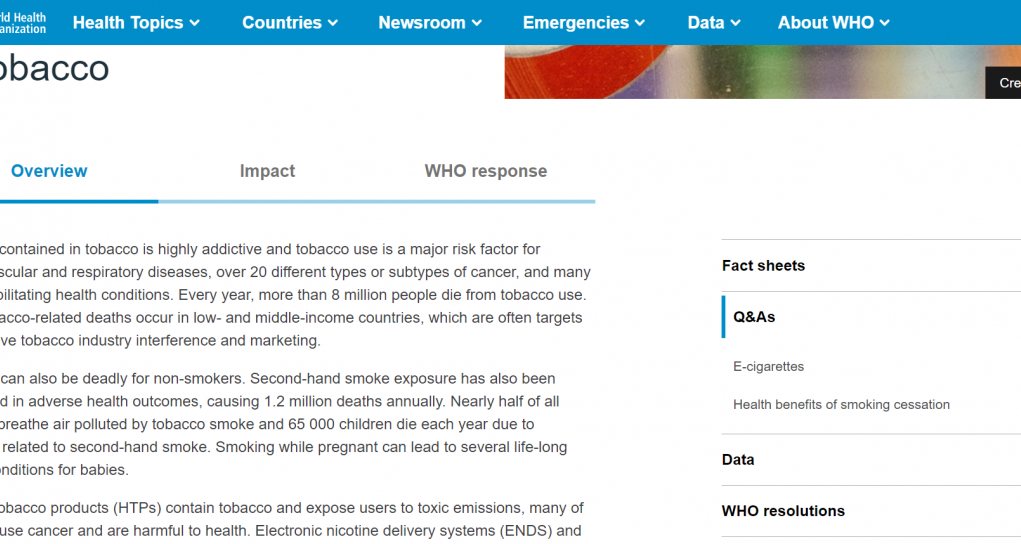A key question that the WHO poses is: ‘Are e-cigarettes more or less dangerous than conventional tobacco cigarettes?’ CAPHRA highlights that given all the science indicating the relative safety of vapes, the WHO should have unequivocally answered this with ‘less’. However, it puts vaping and smoking on the same shelf, declaring that ‘both tobacco products and ENDS pose risks to health, and that the safest option is using neither.
“If you were a smoker desperate to quit reading this Q&A, you’d likely stay smoking. WHO refuses to differentiate between vaping and smoking. At best it completely deflects from answering what are very simple and straight-forward questions. More so, it delivers lie after lie,” said Loucas.
“The fact that WHO even poses a question about whether vaping is more or less dangerous than smoking is a disgrace. Rather than giving a straight one worded answer, WHO refuses to acknowledge international science that has repeatedly confirmed vaping is considerably less harmful than smoking,” she added.
Meanwhile, a new study launched at the ninth edition of Global Forum on Nicotine (#GFN22) indicated once again that the implementation of the WHO’s tobacco control measures known as MPOWER, were not in any way associated with lower levels of tobacco-related mortality rates in Europe. On the other hand, independent research also shared at the event, revealed that switching from smoking to Swedish-style snus, is proving to be an effective strategy to reduce the harms caused by tobacco.
Paper discusses smoking cessation-related progress per country
Similarly, a recent 59-page white paper discussing case studies conducted in several countries to measure smoking cessation-related progress, has shown that those following the WHO’s guidance, keep struggling with higher smoking rates.
Titled “Vaping Works. International Best Practices: United Kingdom, New Zealand, France and Canada,” the publication was released by the Property Rights Alliance. It consisted of four respective case studies by Christopher Snowdon (Institute of Economic Affairs, the UK), Louis Houlbrooke (New Zealand Taxpayers’ Union, New Zealand), Patrick Coquart (IREF, France), and Prof Ian Irvine (Concordia University, Canada), and confirmed what public health experts have been pointing out all along.
“Countries applying progressive Tobacco Harm Reduction policies are enjoying a significant fall in smoking rates. Whereas those following the World Health Organization’s guidance continue to experience excessive smoking-related illnesses and deaths,” said the Coalition of Asia Pacific Tobacco Harm Reduction Advocates (CAPHRA).
CAPHRA Executive Coordinator Nancy Loucas, said that thankfully the release of this significant data coincided with the WHO’s Framework Convention on Tobacco Control (FCTC) which held its infamous COP9 session last November. “Ultimately, this paper proves countries that embrace vaping, such as France, the United Kingdom, New Zealand and Canada, have witnessed a decrease in smoking rates that is twice as fast as the global average,” she said.













